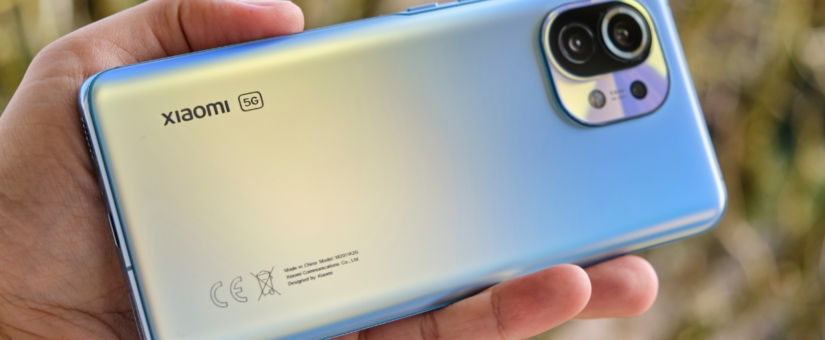
Xiaomi Mi 11 Review
The Xiaomi Mi 11 is an attractive device. The brand is doing its best to be among the larger smartphone providers. At over $800, the Xiaomi Mi 11 is the brand’s most expensive model. The OLED screen is the best feature, with 120Hz refresh rate, 480Hz touch samplerate, HDR10+ support, 10bit colors and a True Tone-like feature where the screen adjusts to the ambient light. There will certainly be a large audience for the big, beautiful 1440p screen with state-of-the-art technology. Especially now that the Samsung Galaxy S21 has scaled back the resolution and the prices of the two models are similar. Therefore, we will compare these two devices a lot we in this review.
The Xiaomi has 256GB storage memory, the latest high-end Qualcomm Snapdragon 888, good stereo speakers, a 55W charger and good build quality with the latest Gorilla Glass Victus on the front and back of the device. Despite no official IP certification, the Xiaomi Mi 11 is quite waterproof. All in all, it’s a fine smartphone on paper, the controls are smooth and the device is fast.
Software
The Xiaomi Mi 11 runs on the software program MIUI and behind it runs Android 11. Many like the Android skin because there are good visual elements present and it is easy to set up. What is not so neat, however, is that the interface elements or text are regularly a bit close to the edge. Furthermore, some options are placed in illogical places and the translation is not always optimal. There is also a lot of bloatware on the device, which sometimes makes it a bit slow. You can remove all these apps, but then there is still a lot left. If you want to get rid of them completely, you should disable them, but you cannot remove them from the device by default. The software is still questionable, it all works a little less well than some other Android skins.
Display
The screen is slightly deflected and protected with the so-called Gorilla Glass Victus. The refresh rate of the screen is variable, according to Xiaomi, to save energy when 120Hz is not needed. 30Hz would be the minimum frequency, but that is almost not observed. The frequency speed can be turned on in the developer option. According to that feature, the Mi 11 switches the screen refresh back to 60fps in the camera and in video apps, for example. The same also happens when nothing is observed on the screen for a few seconds. With Samsung, higher screen refresh is enabled by touch, with the Mi 11 this is when there is movement in the screen. Also, the Mi 11’s fingerprint scanner is slower and less accurate and the place where your finger presses on the screen listens more closely. With a touch sampling rate of 480Hz, it is twice as high as the S21 series. With that, in theory, the screen should respond to touches instantly. Unfortunately, in practice it is a little less so.
Camera
The camera setup is quite similar to its predecessor, the Xiaomi Mi 10. The phone has 3 cameras and they are of good quality. They come close to generation-mate Galaxy S21 but still they sometimes produce slightly less beautiful photos. The depth sensor is also absent on this device and in its place is a better 5-megapixel macro camera. It can take detailed photos. We do miss a telephoto lens and the level of detail goes down a lot while zooming in.
With the front camera, there are a lot of possible settings. For example, you can make your nose narrower, brush away double chin, change hairline or change the size of your eyes. Daytime selfies are a lot less contrasty compared to the S21 selfies. It’s not a huge difference and maybe it’s even a matter of taste.
Accu
These days we are used to a lot in terms of battery life in a day. The Xiaomi Mi 11 is a lot thinner than its predecessor and therefore has a somewhat smaller battery capacity. This has gone from 4780Mah to 4600Mah. The screen is quite large and has many pixels and high refresh rate. In comparison, the battery capacity of the Samsung Galaxy S21 is 4800Mah and has a lower screen resolution and a smaller screen. With the Mi 11, you can adjust the resolution and screen refresh rate though, which can stretch the battery life a bit more. So the battery life is not great. We do get through the day, but the screen requires a lot of energy. Fortunately, you can charge the device tremendously fast, which is another advantage over the S21 series.
Wrapping up
The Xiaomi Mi 11 can be compared to the Samsung Galaxy S21+ or in terms of screen even the S21 Ultra. However, the price is not too low and if you want to spend that kind of money on a phone you might be better off choosing the Galaxy S21. We think the Mi 11 will only become really interesting to a larger group of people if, like the Mi 10, it drops in price by about 200 euros after four months. If you then compare it, for example, with other devices with a Snapdragon 888, which are still sold around their recommended retail price, the Mi 11 may very well stand out.
- Posted by Gerard Spierenburg
- On May 19, 2021

Leave Reply